The NVIDIA GeForce RTX 2070 Founders Edition Review: Mid-Range Turing, High-End Price
by Nate Oh on October 16, 2018 9:00 AM ESTCompute & Synthetics
Shifting gears, we'll look at the compute and synthetic aspects of the RTX 2070. Though it has its own GPU in the form of TU106, the hardware resources at hand are similar in progression to what we've seen in TU102 and TU104.
Starting off with GEMM tests, the RTX 2070's tensor cores are pulled into action with half-precision matrix multiplication, though using binaries originally compiled for Volta. Because Turing is backwards compatible and in the same compute capability family as Volta (sm_75 compared to Volta's sm_70), the benchmark continues to work out-of-the-box, though without any Turing optimizations.
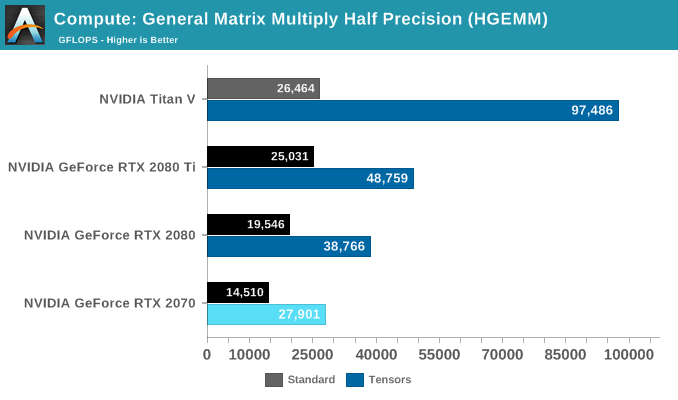
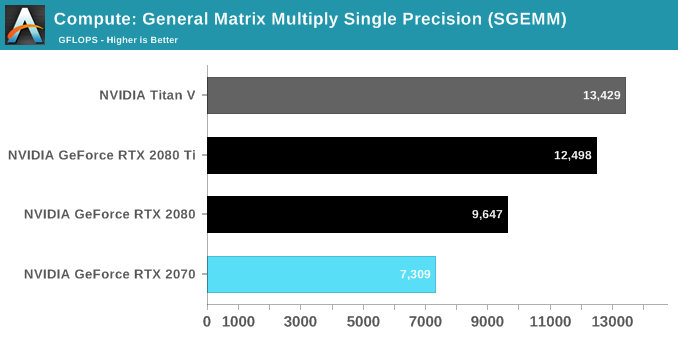
At reference specifications, peak theoretical tensor throughput is around 107.6 TFLOPS for the RTX 2080 Ti, 80.5 TFLOPS for the RTX 2080, and 59.7 TFLOPS for the RTX 2070. Unlike the 89% efficiency with the Titan V's 97.5 TFLOPS, the RTX cards are essentially at half that level, with around 47%, 48%, and 45% efficiency for the RTX 2080 Ti, 2080, and 2070 respectively. A Turing-optimized binary should bring that up, though it is possible that the GeForce RTX cards may not be designed for efficient tensor FP16 operations as opposed to the INT dot-product acceleration. After all, the GeForce RTX cards are for consumers and ostensibly intended for inferencing rather than training, which is the reasoning for the new INT support in Turing tensor cores.
In terms of SGEMM efficiency though, the RTX 2070 is hitting a ridiculous 97% of its touted 7.5 TFLOPS, though to be fair the reference specifications here are done manually rather with a reference vBIOS. The other two GeForce RTX cards are at similar 90+% levels of efficiency, though a GEMM test like this is specifically designed for maximum utilization.
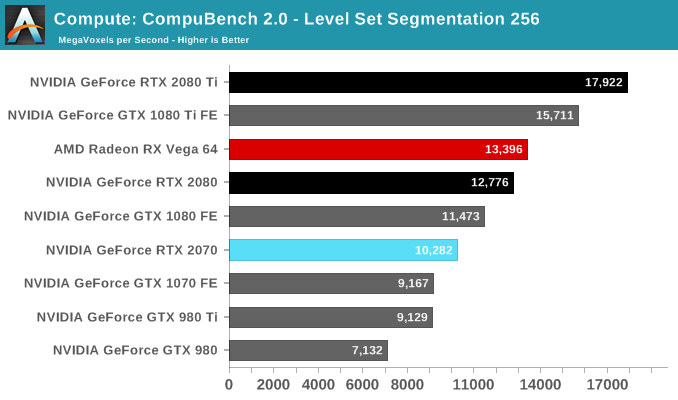
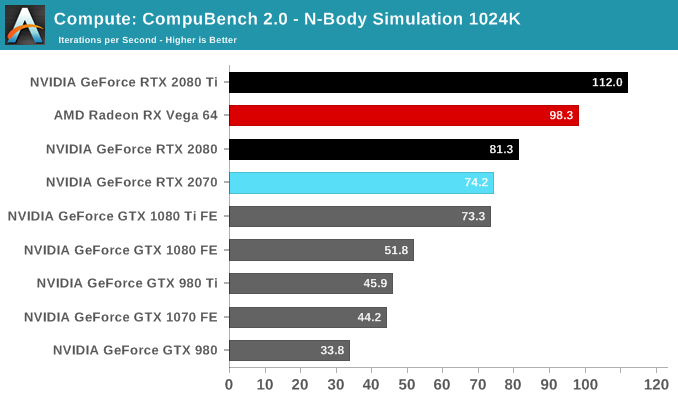
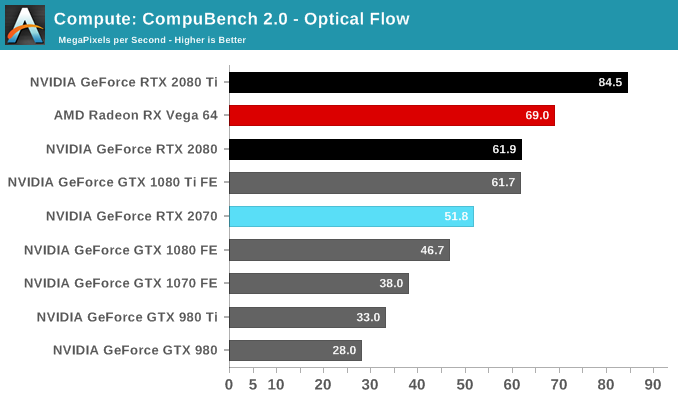
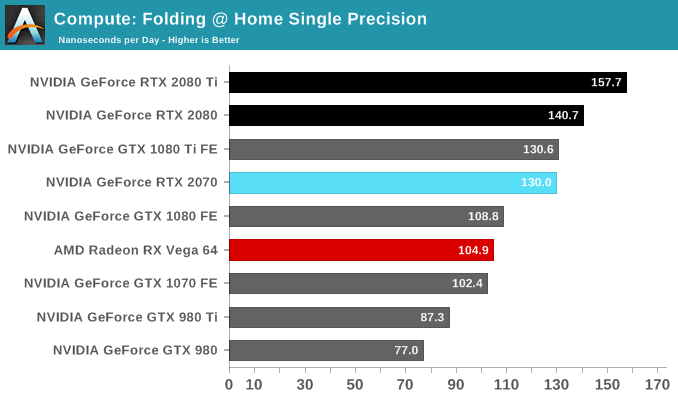
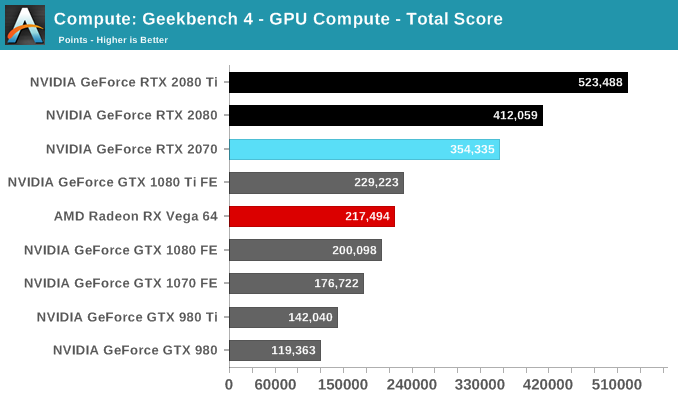
The breakdown of the GB4 subscores seems to reveal a similar uplift like we spotted with the Titan V, which had scored in excess of 509,000 points. We'll have to investigate further but Turing and Volta are clearly accelerating some of these workloads beyond what was capable in Pascal and Maxwell.
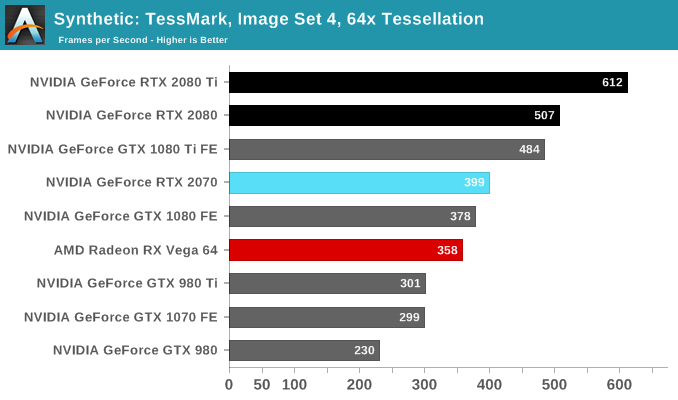
Given that TU106 has 75% of the hardware resources of TU104, the tessellation performance is in line with expectrations. For reference, we noted earlier that the Titan V scored 703 while the Titan Xp scored 604.
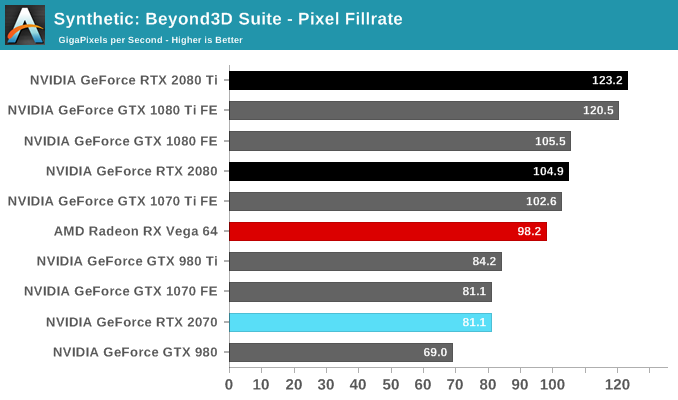
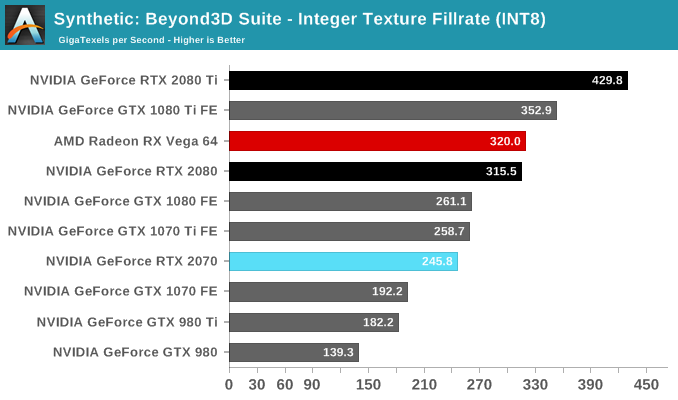










121 Comments
View All Comments
TheinsanegamerN - Tuesday, October 16, 2018 - link
If you had truly been building since the 486 era, then you would know that, despite the price jumps, computers today are MONUMENTALLY cheaper then they were in the 90s. You dont see $4000 desktops in stores today, you sure did in 1991.TheinsanegamerN - Tuesday, October 16, 2018 - link
I mean, seriously, a 4MB RAM stick cost $140 in 1994, and you care complaining that 32 GB cost $300 today?Dragonstongue - Tuesday, October 16, 2018 - link
hold yer horses there lad, lets us some calcs.$2000 in 1991 would be $3,684.96 today...I see LOTS of computers people build that are ~ this level
and $3600 does not buy "cream of the crop" parts today, very high end no doubt, but also not "best of the best"
use a different number 250 1991 money which is ~ mid range gpu pricing these days would be $460.62.
I guess to put a slightly different way, it depends on what one is buying to see that the "value" of the $ spent is often times equivalent much worse or only "slightly" better then we have today.
We may get "more" for the $, but, all things being equal also pay more for what is received, I think the "only" thing in my books that has gotten far less expensive taking everything into account if hard drive pricing 50 in 1991 would be 92.12 today, for 92 you can pretty easily get 2tb hard drive which is WAY more substantial of a hard drive then you could get in pretty much every regard than 50 would have got you in 1991 ^.^
Yojimbo - Tuesday, October 16, 2018 - link
The hard drive you could get for $50 in 1991 was a 0 MB hard drive.I don't understand why you decided to use $2,000 in 1991 when the post you replied to talked about $4,000 in 1991. That's over $7,200 today. A $2,000 computer in 1991 was pretty mid range. So what;s the big deal if $3,600 does not buy "cream of the crop" parts today? $3,600 today gets you something certainly high end and not mid-range. Also, you are talking about driving a range of visuals that just didn't exist for consumers back in 1991. You can spend a good chunk of that $3,600 on a decent 4K monitor, driving almost 4 times the pixels of a standard 1080p monitor and over 8 times the pixels of running at 720p. I don't think these massive differences in display capabilities existed back then. Your extra money back then was mostly going towards a faster CPU, faster I/O, and enhanced sound capabilities.
Vayra - Monday, October 22, 2018 - link
You wot? Back in 1994, 1600x1200 was a thing already, and the vast majority played on 800x600 or worse. In fact, even that was still a high end res.Yojimbo - Monday, October 22, 2018 - link
So who played at 1600x1200? I mean 8K has been a thing for several years but who plays games at it? The resolution scaling game didn't really kick off until later. In the 1990s and early 2000s there was a whole lot of relatively easy visual quality improvements to be achieved through better algorithms. I don't believe people were spending massive amounts of money buying monitors with very small dot pitches so they could play games at high resolutions with crisper images. I'm sure they spent more for bigger monitors, but it was probably getting a 17 inch versus a 15 inch. That sort of difference in size doesn't induce someone to need a bigger GPU to push more pixels.Yojimbo - Monday, October 22, 2018 - link
"GPU" should read "graphics accelerator".Yojimbo - Tuesday, October 16, 2018 - link
Yeah, if I remember correctly my father bought me a Dell 486SX/25 with 4 MB of RAM, a monitor, keyboard, mouse, 120 MB hd, 3.5 in and 5.25 in floppy drives. It just had the PC speakers and a standard 2d graphics adapter. It cost $1,600 I think, which is $3,000 today. PC gaming is much cheaper today.The GPU has become more and more important to gaming performance in relation to the other components of the system. So people spend more money on their GPUs to achieve higher performance and no longer spend $1,000 for a CPU or significantly extra money for super fast RAM or a super fast hard drive.
DanNeely - Tuesday, October 16, 2018 - link
My parents got a similar spec no-name white box PC with non accelerated graphics adapter for $1100 in summer '93. Upgrades over the next few years were 4mb more ram, CDROM+sound blaster clone, ~500 MB hdd (I think, not 100% sure on the capacity), 14.4 modem. I bought the ram and about half the HDD price as a teen, remainder were Christmas purchases.Eletriarnation - Tuesday, October 16, 2018 - link
The 970 is still fine so you really don't need to worry. Even if you did need an upgrade, prices are dropping as they always have for the last generation and if you spent the same amount of money you spent for a 970 at launch now you'd probably be able to get a 1080 so what's really the problem? Nvidia is making the 20xx series larger and more expensive because other people are willing to pay for them, it's as simple as that.